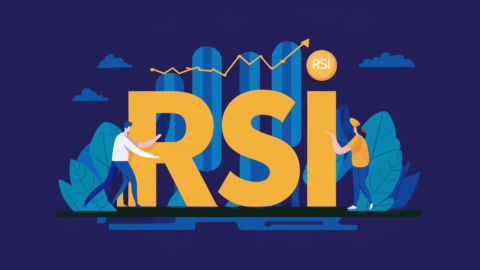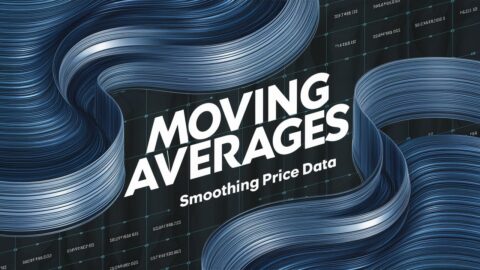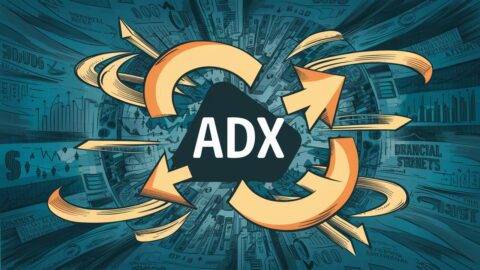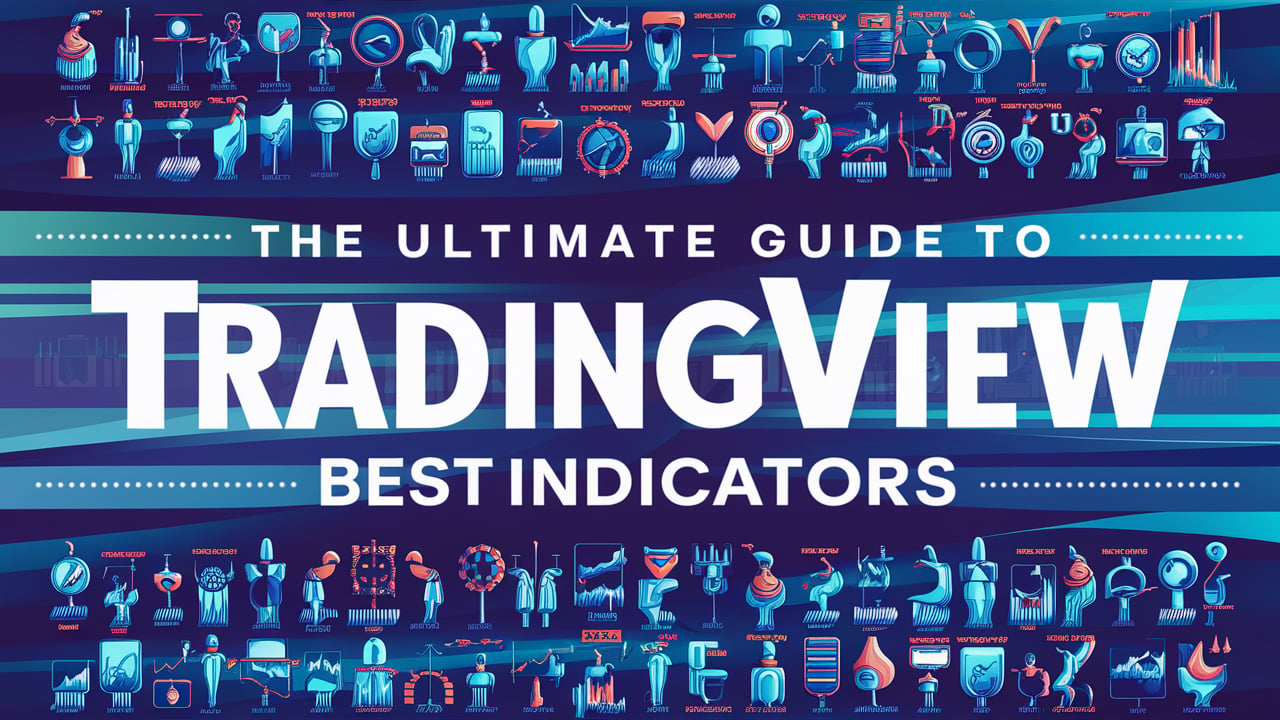Indicators for Tradingview
TradingView Best Indicators: The Ultimate Guide 🚀
TradingView is a powerful platform for traders, offering a wide range of indicators that can help you make informed trading decisions. Whether you’re a novice trader or a seasoned professional, using the right indicators can significantly enhance your trading strategy. This comprehensive guide explores the best TradingView indicators, detailing how they work and how you can use them to improve your trading performance.
Volume Profile: Analyzing Trading Volume

What is Volume Profile?
Volume Profile is a versatile tool that displays trading volume at various price levels over a specified period. This indicator is essential for identifying areas of high and low trading activity, which can act as support and resistance levels. TradingView offers several Volume Profile indicators, including Fixed Range, Session Volume, and Visible Range.
How to Use Volume Profile
- Identify Support and Resistance: High volume nodes (HVNs) indicate strong support and resistance levels.
- Volume Point of Control (VPOC): The price level with the highest volume traded acts as a critical pivot point.
- Trading Strategies: Use the VPOC for entry and exit points. For example, consider going long when the price breaks above the VPOC.
Benefits of Volume Profile
- Clear Visualization: Easy identification of high-volume areas.
- Enhanced Decision Making: Helps in making more informed trading decisions by understanding volume dynamics.
- Customizable: Available in multiple formats (Fixed Range, Session Volume), catering to different trading styles.
Relative Strength Index (RSI): Measuring Momentum

What is RSI?
The Relative Strength Index (RSI) is a momentum oscillator that measures the speed and change of price movements. It ranges from 0 to 100 and helps traders identify overbought or oversold conditions in the market. An RSI above 70 indicates overbought conditions, while an RSI below 30 suggests oversold conditions.
How to Use RSI
- Identify Reversals: Look for RSI to cross above 30 from below for a buy signal and below 70 from above for a sell signal.
- Divergences: Bullish divergence occurs when price makes a new low but RSI makes a higher low, indicating potential upward reversal.
- Trend Confirmation: Use RSI to confirm trends by observing whether it stays above 50 in an uptrend and below 50 in a downtrend.
Benefits of RSI
- Momentum Indicator: Measures the strength of price movements.
- Versatile: Can be used in various market conditions and timeframes.
- Simple to Use: Easy interpretation with clear overbought and oversold levels.
Moving Averages: Smoothing Price Data

What are Moving Averages?
Moving Averages (MAs) are indicators that smooth out price data to identify the direction of a trend. The Exponential Moving Average (EMA) gives more weight to recent prices, making it more responsive to new information. Both MAs and EMAs are crucial for identifying trend direction and potential reversal points.
How to Use Moving Averages
- Trend Identification: Use the MA to identify the overall direction of the trend.
- Crossovers: A bullish signal is generated when a shorter MA crosses above a longer MA, and a bearish signal is generated when a shorter MA crosses below a longer MA.
- Support and Resistance: MAs can act as dynamic support and resistance levels.
Benefits of Moving Averages
- Trend Identification: Helps in identifying the direction of the trend.
- Signal Generation: Provides clear buy and sell signals through crossovers.
- Support and Resistance: Acts as dynamic levels for price action.
Ichimoku Cloud: Comprehensive Market View

What is Ichimoku Cloud?
The Ichimoku Cloud, also known as Ichimoku Kinko Hyo, is a comprehensive indicator that provides insights into market trends, support, and resistance levels. It includes several components such as the Tenkan-sen, Kijun-sen, Senkou Span A, and Senkou Span B, offering a holistic approach to understanding market dynamics.
How to Use Ichimoku Cloud
- Trend Direction: If the price is above the cloud, it indicates an uptrend; if below, a downtrend.
- Support and Resistance: The cloud acts as a support in an uptrend and resistance in a downtrend.
- Signal Generation: Bullish signals are generated when the Tenkan-sen crosses above the Kijun-sen, and bearish signals when it crosses below.
Benefits of Ichimoku Cloud
- Comprehensive Analysis: Provides a complete view of the market in one glance.
- Multiple Components: Each component offers unique insights, making it a versatile tool.
- Clear Signals: Generates clear buy and sell signals.
Volume-Weighted Average Price (VWAP): Crucial for Day Traders

What is VWAP?
The Volume-Weighted Average Price (VWAP) is a trading benchmark that shows the average price a security has traded at throughout the day, based on both volume and price. It’s crucial for day traders as it helps determine the current trend and potential reversal points.
How to Use VWAP
- Trend Identification: Prices above the VWAP indicate an uptrend, while prices below indicate a downtrend.
- Entry and Exit Points: Use VWAP as a reference point for entering and exiting trades.
- Support and Resistance: VWAP can act as intraday support and resistance levels.
Benefits of VWAP
- Benchmarking: Provides a benchmark for daily trading performance.
- Trend Analysis: Helps in identifying intraday trends.
- Volume Integration: Incorporates volume into the price analysis for better accuracy.
Supertrend: Following the Trend

What is Supertrend?
The Supertrend indicator is a trend-following tool that uses the Average True Range (ATR) to identify potential buy and sell signals. It adjusts to volatility, making it a reliable indicator for determining market direction.
How to Use Supertrend
- Trend Identification: A green Supertrend line indicates an uptrend, while a red line indicates a downtrend.
- Signal Generation: Buy signals are generated when the price closes above the Supertrend line, and sell signals when it closes below.
- Stop-Loss Placement: Use the Supertrend line to place stop-loss orders, just below the line for long positions and above for short positions.
Benefits of Supertrend
- Trend Following: Excellent for identifying and following trends.
- Volatility Adjustment: Adjusts to market volatility for more accurate signals.
- Clear Signals: Provides clear buy and sell signals.
Average Directional Index (ADX): Measuring Trend Strength

What is ADX?
The Average Directional Index (ADX) measures the strength of a trend and helps traders determine whether the market is trending or in a trading range. It works well in conjunction with the Directional Movement Index (DMI), which includes the +DI and -DI lines.
How to Use ADX
- Trend Strength: A high ADX (above 25) indicates a strong trend, while a low ADX (below 20) indicates a weak or sideways trend.
- Confirm Trends: Use ADX to confirm the strength of a trend identified by other indicators.
- Avoid Range Trading: Avoid range trading strategies when ADX indicates a strong trend.
Benefits of ADX
- Trend Confirmation: Confirms the strength of a trend, reducing the risk of false signals.
- Versatile: Can be used in conjunction with other indicators for better accuracy.
- Market Analysis: Helps in determining whether to use trend-following or range-trading strategies.
Fibonacci Retracements: Identifying Key Levels

What are Fibonacci Retracements?
Fibonacci Retracement levels are used to identify potential reversal levels. The Auto Fib Retracement indicator on TradingView automatically plots these levels, saving traders time and ensuring accuracy.
How to Use Fibonacci Retracements
- Identify Reversals: Look for price reversals at key Fibonacci levels (23.6%, 38.2%, 50%, 61.8%, and 78.6%).
- Support and Resistance: Use Fibonacci levels as potential support and resistance points.
- Combination with Other Indicators: Combine Fibonacci levels with other indicators to increase the accuracy of your analysis.
Benefits of Fibonacci Retracements
- Key Levels: Identifies critical support and resistance levels.
- Automatic Plotting: Saves time with automatic level plotting.
- Enhanced Accuracy: Provides accurate reversal points when used with other indicators.
MACD: Analyzing Momentum and Trend

What is MACD?
The Moving Average Convergence Divergence (MACD) is a trend-following momentum indicator that illustrates the relationship between two moving averages of a security’s price. This indicator helps traders identify potential buy and sell points based on crossovers and divergences. The MACD is composed of three components: the MACD line, the signal line, and the histogram. The MACD line is the difference between the 12-day and 26-day Exponential Moving Averages (EMA). The signal line is the 9-day EMA of the MACD line, and the histogram represents the difference between the MACD line and the signal line.
How to Use MACD
- Signal Line Crossovers:
- Bullish Signal: A bullish signal is generated when the MACD line crosses above the signal line, indicating upward momentum.
- Bearish Signal: A bearish signal occurs when the MACD line crosses below the signal line, indicating downward momentum.
- Divergences:
- Bullish Divergence: Occurs when the price makes a new low while the MACD forms a higher low, suggesting a potential upward reversal.
- Bearish Divergence: Occurs when the price makes a new high while the MACD forms a lower high, suggesting a potential downward reversal.
- Histogram Analysis:
- The MACD histogram helps gauge the strength of the trend. An expanding histogram indicates increasing momentum, while a contracting histogram suggests weakening momentum.
Benefits of MACD
- Trend Following: The MACD is effective in identifying the direction and strength of a trend, helping traders align their trades with the prevailing market trend.
- Momentum Analysis: By measuring the momentum of price movements, the MACD provides valuable signals for potential entry and exit points.
- Versatile Application: The MACD can be used in various market conditions and timeframes, making it a versatile tool for traders.
Comprehensive Guide to the Best TradingView Indicators 📈
| Indicator | Description | How to Use | Benefits |
|---|---|---|---|
| Volume Profile 📊 | Displays trading volume at various price levels. | Identify support and resistance by analyzing high-volume areas. | Enhances decision-making with clear visualization. |
| RSI (Relative Strength Index) 📈 | Measures the speed and change of price movements. | Identify overbought (>70) and oversold (<30) conditions. | Simple and versatile momentum indicator. |
| Moving Averages (MA & EMA) 🔄 | Smooths price data to identify trends. | Use crossovers for buy/sell signals and as dynamic support/resistance. | Clear trend direction and reversal signals. |
| Ichimoku Cloud ☁️ | Provides a comprehensive view of trends, support, and resistance. | Analyze cloud color and position for trend direction and key levels. | Complete market analysis tool with multiple components. |
| VWAP (Volume-Weighted Average Price) 📏 | Shows the average price based on volume and price. | Use for intraday trend analysis and as support/resistance. | Crucial for day trading with volume integration. |
| Supertrend 📉 | Trend-following indicator using ATR for buy/sell signals. | Buy when price is above Supertrend line; sell when below. | Adjusts to volatility for reliable trend signals. |
| ADX (Average Directional Index) 📶 | Measures the strength of a trend. | High ADX (>25) indicates strong trend; low ADX (<20) indicates weak trend. | Confirms trend strength and guides strategy. |
| Fibonacci Retracements 🔢 | Identifies potential reversal levels. | Use key Fib levels (e.g., 38.2%, 61.8%) for support/resistance. | Automatic plotting saves time, enhances accuracy. |
| MACD (Moving Average Convergence Divergence) ⚡ | Shows the relationship between two moving averages. | Use crossovers and histogram for trend and momentum analysis. | Versatile for trend following and momentum signals. |
| Bollinger Bands 🎯 | Shows volatility and potential price breakout points. | Look for price bouncing off bands for potential reversals. | Identifies overbought/oversold conditions and volatility. |
Explanation
- Volume Profile 📊: Displays horizontal bars indicating trading volume at different price levels, helping traders spot support and resistance areas.
- RSI 📈: An oscillator ranging from 0 to 100, highlighting overbought and oversold conditions to identify potential reversal points.
- Moving Averages 🔄: Smooth out price data, with crossovers providing clear buy and sell signals.
- Ichimoku Cloud ☁️: Offers a complete picture of the market with multiple lines indicating trends and support/resistance levels.
- VWAP 📏: Essential for day traders, showing the average price weighted by volume.
- Supertrend 📉: Adjusts to market volatility, providing straightforward buy and sell signals based on price action relative to the trend line.
- ADX 📶: Helps determine the strength of a trend, useful for deciding whether to follow a trend or avoid range-bound markets.
- Fibonacci Retracements 🔢: Automatically plots retracement levels, aiding in identifying critical support and resistance zones.
- MACD ⚡: Combines moving averages to show momentum and trend direction, with histograms providing additional insights.
- Bollinger Bands 🎯: Uses standard deviations around a moving average to indicate volatility and potential breakout points.
Conclusion
Utilizing these top TradingView indicators can significantly enhance your trading strategy. Each indicator offers unique insights into market trends, momentum, volatility, and potential reversal points, making them invaluable tools for traders. By understanding and applying these tools, you’ll be better equipped to make informed trading decisions, ultimately increasing your chances of success in the markets. Remember, combining multiple indicators can provide a more comprehensive view and help cross-verify signals, leading to a more robust trading strategy.
FAQs
What is the best indicator for trend identification?
The Ichimoku Cloud and Supertrend are excellent for identifying trends due to their comprehensive approach and ability to adjust to market volatility.
How can I identify overbought or oversold conditions?
The Relative Strength Index (RSI) and Bollinger Bands are particularly useful for identifying overbought and oversold conditions in the market.
What indicators are best for day trading?
VWAP and Volume Profile are highly recommended for day trading as they provide crucial insights into price action and trading volume throughout the day.
How do I use Fibonacci Retracements?
Fibonacci Retracements are used to identify potential support and resistance levels. The Auto Fib Retracement indicator on TradingView can automatically plot these levels for you.
Are moving averages useful in trading?
Yes, both Moving Averages (MA) and Exponential Moving Averages (EMA) are essential tools for identifying trend direction and potential reversal points, making them invaluable for traders of all levels.
What is the ADX indicator used for?
The Average Directional Index (ADX) measures the strength of a trend, helping traders determine whether the market is trending or in a trading range.
How can I get the most out of TradingView indicators?
Combine multiple indicators to cross-verify signals and develop a robust trading strategy. Regularly backtest your strategies to ensure their effectiveness.
By integrating these indicators into your trading routine, you can better navigate the complexities of the financial markets and make more informed trading decisions. Whether you’re looking to identify trends, measure momentum, or find key support and resistance levels, these TradingView indicators provide the tools you need to succeed.

